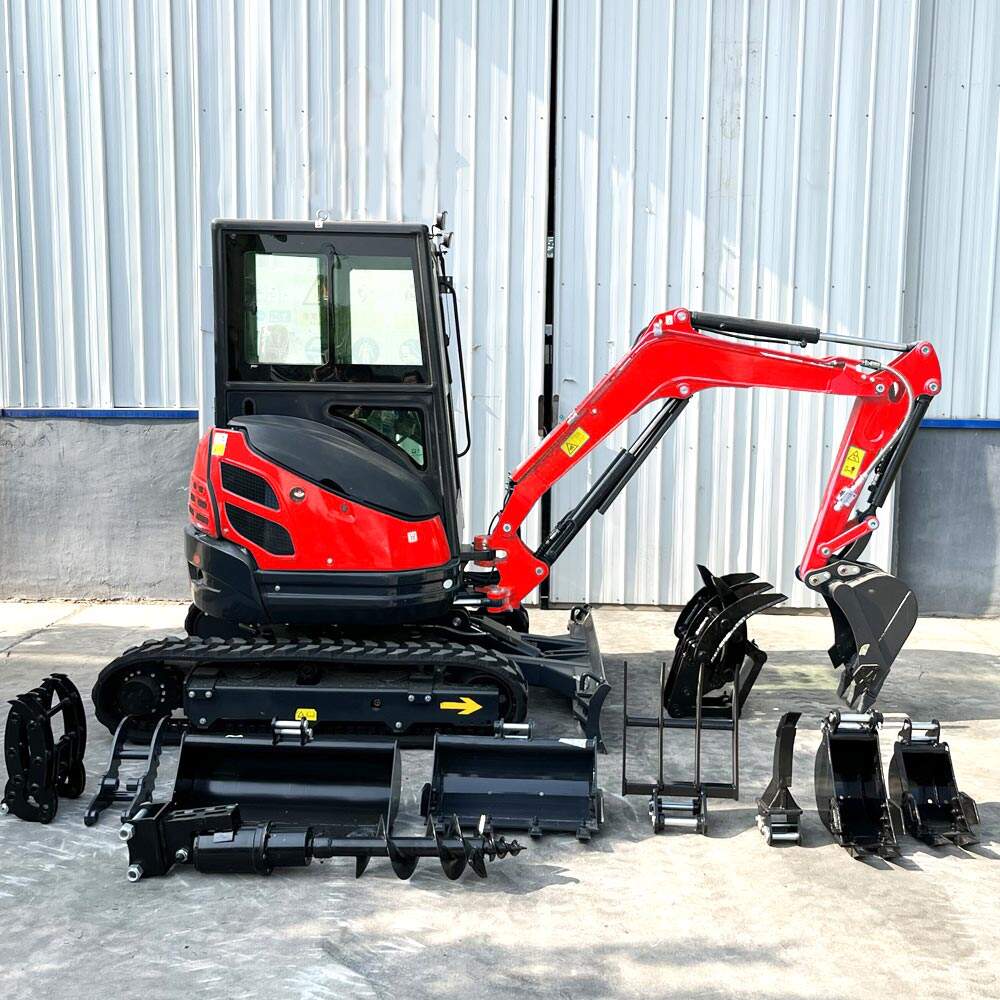Excavators are one of the most essential machines in the construction and earthmoving industries, evolving significantly over the years to meet increasing demands for efficiency, power, and precision. From their early mechanical origins to today’s advanced hydraulic models and future AI-driven innovations, excavators have undergone remarkable transformation. At Mingyang (Shandong) Heavy Industry Machinery Co., Ltd., we continuously innovate to stay at the forefront of excavator technology. This article explores the evolution of excavators from the past to the present and into the future.
1. The Past: Early Mechanical Excavators
The history of excavators dates back to the early 19th century, when the first mechanical digging machines were introduced:
Steam-Powered Excavators (1830s-1920s) – The first steam-powered excavator, the Otis steam shovel, was invented in 1835. These massive machines revolutionized large-scale excavation but were slow and required significant manpower.
Cable-Operated Excavators (1920s-1950s) – The introduction of cable-operated systems improved efficiency, making excavation easier and more controlled. However, these machines lacked flexibility and required skilled operators.
2. The Present: Modern Hydraulic Excavators
Hydraulic technology transformed the excavator industry in the mid-20th century, leading to the powerful and versatile machines we use today:
Hydraulic Systems (1950s-Present) – The shift from cable-operated to hydraulic excavators significantly improved precision, control, and efficiency. Hydraulic excavators became the industry standard for construction, mining, and demolition.
Enhanced Operator Comfort – Modern excavators now feature air-conditioned cabs, ergonomic controls, and digital interfaces, ensuring maximum comfort and efficiency.
Fuel Efficiency & Hybrid Technology – With growing environmental concerns, many manufacturers, including Mingyang (Shandong) Heavy Industry Machinery Co., Ltd., are focusing on fuel-efficient and hybrid excavators to reduce carbon emissions.
Smart Control Systems – Advanced GPS, telematics, and automated functions help operators improve accuracy and productivity, making modern excavators smarter and more efficient.
3. The Future: Intelligent and Autonomous Excavators
The future of excavators is driven by automation, artificial intelligence, and sustainable energy solutions:
Autonomous Excavators – AI-powered machines with sensors and LiDAR technology will be capable of fully automated excavation, reducing the need for human intervention and increasing efficiency in hazardous environments.
Electric and Hydrogen-Powered Excavators – As the industry moves toward sustainability, battery-powered and hydrogen-fuel-cell excavators will replace diesel models, reducing emissions and operational costs.
AI and Machine Learning Integration – Future excavators will feature AI-driven diagnostics, self-learning capabilities, and real-time data analytics to optimize digging performance.
Remote and Augmented Reality (AR) Control – Operators will soon be able to control excavators remotely using AR interfaces, improving safety and operational flexibility.
From steam-powered machines to AI-driven autonomous excavators, the industry has come a long way. Mingyang (Shandong) Heavy Industry Machinery Co., Ltd. is committed to advancing excavator technology by integrating smart systems, fuel efficiency, and operator-focused innovations. As we move into the future, our goal is to provide cutting-edge excavators that enhance productivity while reducing environmental impact.
For more information about our latest excavator models and innovations, feel free to Contact us!

 ONLINE
ONLINE